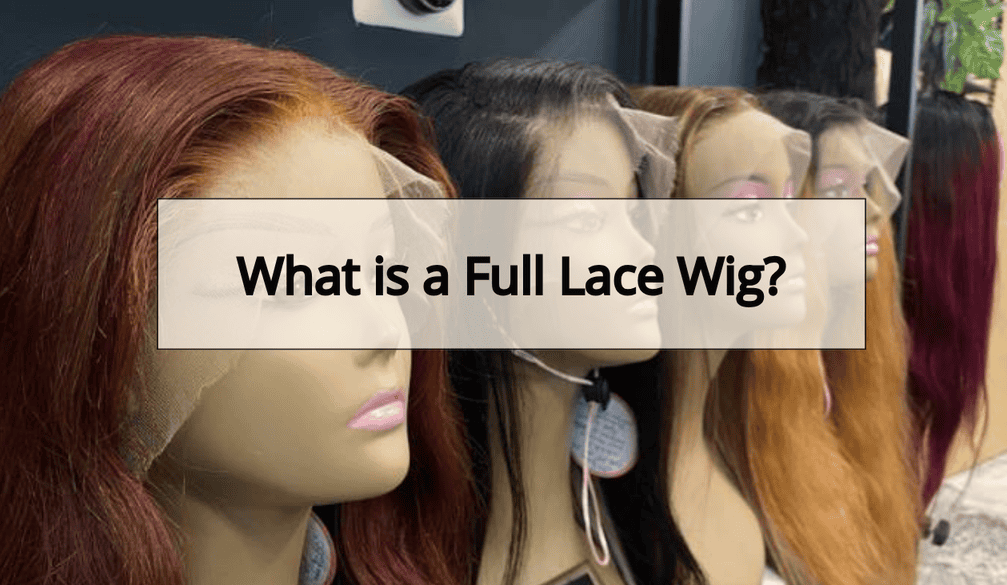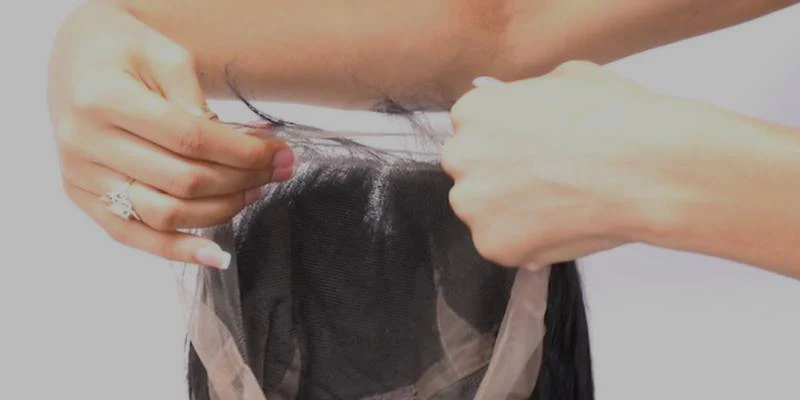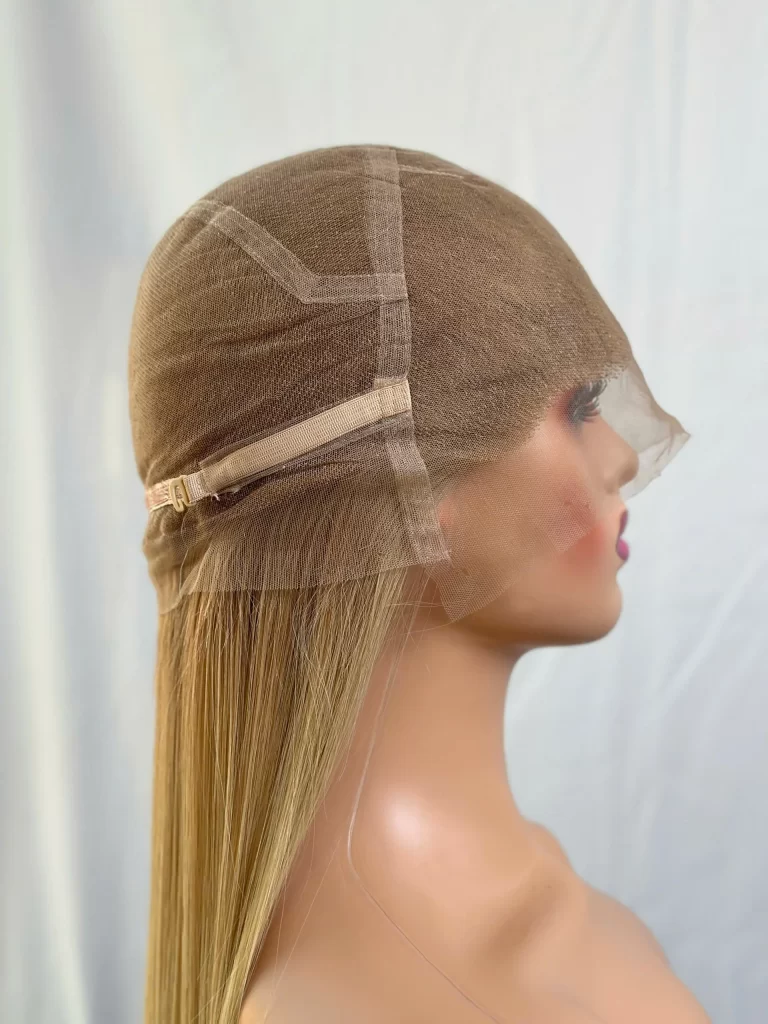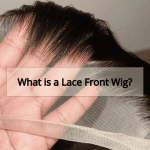Hair Knowledge
What Is a Full Lace Wig? Key Differences from Lace Front
Lace wigs have become a beauty essential in salons across Europe—and full lace wig is often seen as the ultimate premium option. But what exactly is a full lace wig? How does it compare to the popular lace front design? In this guide, we’ll break down everything you need to know about full lace wigs, their structure, benefits, and how they differ from lace front styles.
I. What Is a Full Lace Wig?
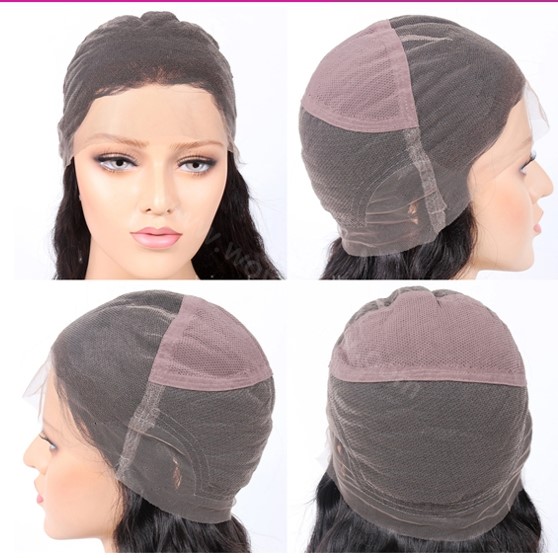
A full lace wig is a premium type of wig made entirely from lace material, where each strand of hair is individually hand-knotted onto the lace cap. This full-lace construction creates a highly realistic appearance, offering the illusion that the hair is growing directly from your scalp—no matter where you part or style it.
Unlike lace front wigs, which only feature lace at the hairline, full lace wigs extend the lace base across the entire head, from front to nape. This allows for 360-degree parting and versatile styling, making it ideal for high ponytails, braids, buns, and updos.
Key Structural Features:
-
100% Lace Cap: The entire base is crafted from soft, breathable lace—usually Swiss lace, HD lace, or transparent lace. This full coverage mimics the scalp and provides maximum ventilation for all-day comfort.
-
Hand-Tied Construction: Each individual hair strand is ventilated by hand, one by one, into the lace. This craftsmanship takes longer but ensures a natural-looking finish and smooth hair movement.
-
No Wefts or Tracks: Unlike machine-sewn wigs, full lace wigs do not have sewn-in wefts. This means the wig lies completely flat against the head, without bumps or visible seams.
-
Elastic Support & Combs: Many full lace wigs include elastic straps, adjustable bands, and small combs sewn into the cap for added security—helping the wig stay firmly in place.
-
Freestyle Parting: You can part the hair anywhere—middle, side, zigzag—or switch it up daily. The full lace base gives the freedom to change hairstyles without limitations.
Materials Used:
-
Hair Quality: Typically made from 100% Remy or Virgin human hair, ensuring natural shine, cuticle alignment, and long-lasting wear.
-
Lace Types:
-
Swiss Lace: Durable, slightly thicker, and easier to handle—great for beginners.
-
HD Lace: Ultra-thin and transparent, perfect for seamless blending on all skin tones.
-
Transparent Lace: A middle-ground option, balancing durability and invisibility.
-
II. Pros of Full Lace Wigs
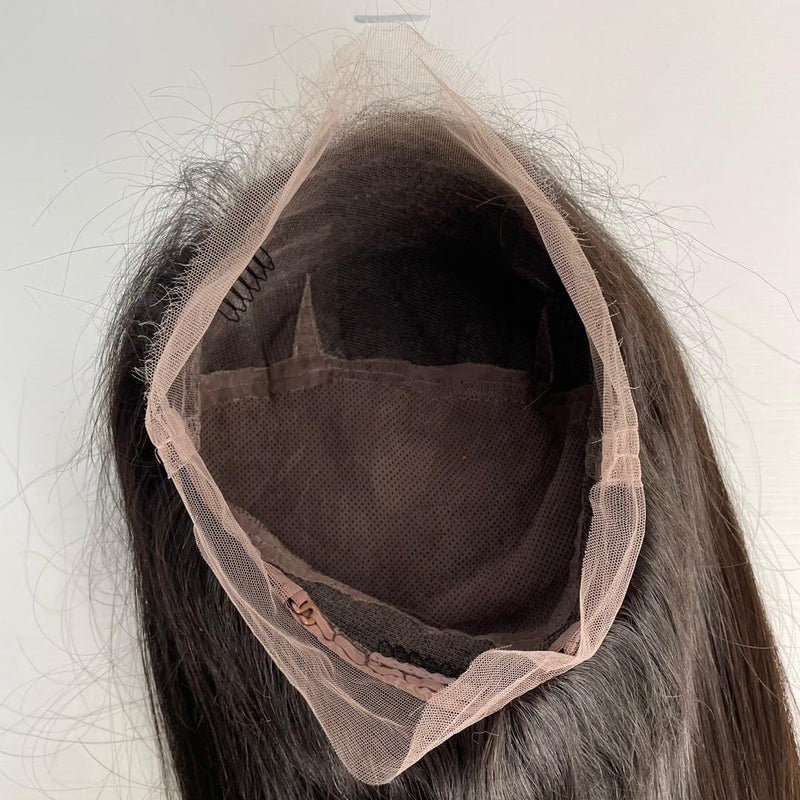
If you’re looking for the most versatile and natural-looking wig option, full lace wigs are often considered the gold standard. Here’s why many professionals and beauty enthusiasts choose them:
1. 360° Styling Freedom
Full lace wigs allow you to part and style your hair in any direction—including high ponytails, buns, and intricate braids—without exposing wefts or tracks. This makes them the go-to choice for people who want styling flexibility every day.
2. Ultra-Realistic Scalp Illusion
Thanks to the hand-tied construction across the entire lace base, each strand appears to grow directly from your scalp. Whether you’re parting down the middle or pulling it back, the illusion remains seamless and believable.
3. Lightweight and Breathable
The full lace cap is made from soft, ventilated lace that allows airflow to your scalp. This makes it far more breathable and comfortable than traditional wefted wigs—ideal for long wear, especially in warmer climates.
4. Natural Hair Movement
Because there are no machine-sewn tracks or stiff base materials, the hair in full lace wigs moves freely and naturally. This enhances the realism and helps the wig blend effortlessly with your features and movement.
5. Long-Term Investment
Although the upfront cost is higher, full lace wigs are durable when properly cared for. Many can last over a year with daily use, making them a cost-effective choice for clients looking for long-term solutions.
6. Ideal for Hair Loss or Protective Styling
Full lace wigs cover the entire scalp, making them ideal for clients with alopecia, thinning hair, or those seeking a complete protective style to shield natural hair from heat, chemicals, or tension.
III. Cons of Full Lace Wigs
While full lace wigs offer unmatched versatility and realism, they also come with a few considerations you should be aware of—especially if you’re recommending them to clients or purchasing one for yourself.
1. Higher Upfront Cost
Full lace wigs are typically more expensive than lace front or closure wigs. The meticulous hand-tying process and full-lace construction significantly increase production costs. While it’s a worthwhile investment for many, the initial price may not be suitable for every budget.
2. More Skill Required for Installation
Unlike lace front wigs that are easier to apply, full lace wigs require more advanced skills—especially if you’re aiming for a flawless, undetectable finish. Proper alignment, trimming, and gluing techniques are essential to ensure the lace lays flat and looks natural.
3. Time-Consuming Application
Installing a full lace wig can take anywhere from 45 minutes to over an hour, particularly if you’re doing a full glue-down or customizing the hairline. This may not be ideal for people who want a quick and easy daily routine.
4. Delicate Lace Base
Because the entire cap is made of lace, full lace wigs are more fragile than other types. They can tear more easily during installation or removal if handled roughly. This requires extra care, especially for first-time users.
5. More Frequent Maintenance
To keep the lace clean and the wig secure, full lace wigs require consistent upkeep. That includes regular cleaning of the lace, reapplication of adhesive, and proper storage when not in use. Clients who are not used to high-maintenance wigs may find this burdensome.
IV. How to Wear and Style Full Lace Wigs
Wearing a full lace wig isn’t quite the same as throwing on a cap—this luxurious piece deserves a proper installation for the best blend and hold. Whether you’re a stylist or a wig enthusiast, mastering this process is key to achieving a seamless, natural look that stays in place.
1. Prep Your Natural Hair
The foundation begins underneath. For short hair, a wig cap in your skin tone will help create a smooth, flat surface. If your hair is long, braid it into cornrows or slick it back with styling gel to ensure the wig sits flush against your scalp. A flatter base means a more realistic finish.
2. Tint the Lace
Use a small amount of liquid foundation or lace tint that matches your skin tone to lightly dab along the lace. This helps the lace blend with your natural hairline and skin, eliminating any visible contrast.
3. Trim the Lace
Before applying any adhesive, place the wig on your head to check the fit. Then, carefully trim the excess lace along the natural hairline of the wig using precision scissors. Work slowly and follow the contours of the pre-plucked hairline.
4. Outline the Glue Area
With the wig still in place, use a white eyeliner pencil to trace along the front hairline and sides where the lace will sit. This guide will help ensure the glue is applied evenly and precisely.
5. Apply Lace Adhesive
Pull the wig back slightly and apply a thin layer of lace glue (or your preferred adhesive) along the outlined areas. Wait until it becomes tacky or turns clear, then apply a second layer for a stronger hold.
6. Set the Wig in Place
Gently pull the lace forward and press it down into the glue. Use a fine-tooth comb or edge brush to press the lace into the skin for better adhesion. Don’t forget to tuck in any built-in combs for added security. Use an elastic melt band and a blow dryer (cool or low heat) to seal the hairline.
7. Secure the Sides and Back
Repeat the adhesive process along the sides and nape. Full lace wigs allow for full 360° attachment, so be thorough to avoid lifting at the edges.
8. Final Touches for a Seamless Look
Spray a light layer of holding spray (like Got2B or Ebin Wonder Lace) around the perimeter and press the lace again. This helps “melt” the lace for an even more invisible finish.
9. Style to Your Liking
Once the wig is secure, you’re free to style it however you like. Use flat irons, curling wands, or styling tools to create sleek straight looks, waves, or updos. Since the lace covers the entire scalp, you can part it anywhere and even wear high ponytails or buns for a natural-looking finish from every angle.
V. Key Differences Between Full Lace and Lace Front Wigs
When deciding between a full lace wig and a lace front wig, it’s essential to understand how they differ—not just in price, but in construction, versatility, and wearability. Below is a breakdown of the most important differences to help you or your clients make the right choice.
| Feature / Criteria | Full Lace Wig | Lace Front Wig |
|---|---|---|
| Lace Coverage | Full lace base covers the entire head | Lace only at the front (hairline area) |
| Parting Flexibility | 100% free parting in any direction | Limited to front area; usually middle or side part |
| Styling Versatility | Can be styled in updos, ponytails, braids, etc. | Can be styled down or in limited half-up styles |
| Appearance | Most natural-looking from all angles | Natural hairline at the front only |
| Installation Difficulty | Requires professional or advanced skills | Easier to install, more beginner-friendly |
| Application Time | Longer (45+ mins); involves full glue-down or sew-in | Quicker (15–30 mins); lace only at the front |
| Comfort Level | Breathable and lightweight | Breathable front, but may feel heavier at the back |
| Durability of Lace | More delicate due to full lace | More durable at back, lace only in front |
| Maintenance Needs | Requires more care, especially with glue reapplication | Lower maintenance, fewer reapplications needed |
| Average Price | Higher (premium option) | More affordable (budget-friendly) |
| Ideal For | Clients who want max realism & styling freedom | Clients who want a natural look but simpler use |
✅ Conclusion tip for stylists: If your client prioritizes realism and hairstyle flexibility (e.g., ponytails, high buns), a full lace wig is the best option—though it demands higher skill and budget. For everyday wear and ease of use, lace front wigs offer a great balance between appearance and practicality.
Conclusion
A full lace wig is the gold standard in wig versatility and realism. With all-around lace coverage, unmatched styling flexibility, and a natural look from every angle, it’s a favorite among stylists, performers, and clients who want the very best. While it does come at a higher price point, the payoff in confidence and wearability is often worth it.

